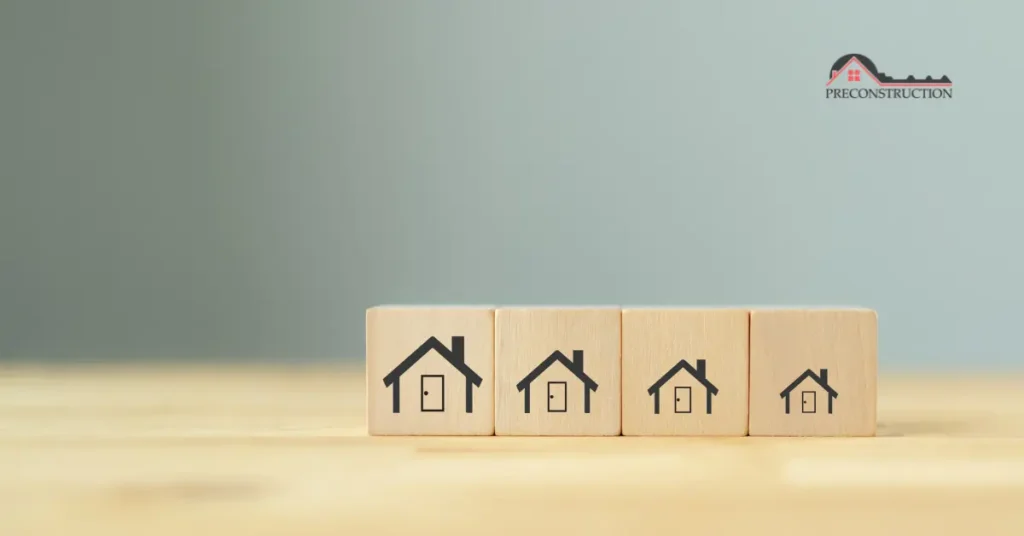Downsizing Guide Simplify Your Life – Downsizing is a common step for homeowners looking to simplify their lives, reduce expenses, or prepare for retirement. It represents a significant lifestyle change, offering both practical and emotional benefits. Whether you’re moving from a large suburban home to a city condo, or transitioning to a more manageable space for health reasons, downsizing can be a positive and transformative experience.
However, the process can also be daunting, filled with challenges like letting go of belongings, organizing your space efficiently, and adjusting to a smaller environment. This detailed guide aims to help you navigate this transition smoothly, with practical tips and strategies to make your downsizing journey as stress-free and rewarding as possible.
Why Downsizing is a Smart Move
There are many reasons to downsize, and understanding your “why” is crucial for making the process easier. Whether it’s for financial reasons, to reduce the burden of home maintenance, or to move closer to loved ones, downsizing offers numerous benefits:
- Financial savings: Lower mortgage or rent payments, reduced utility costs, and less maintenance can free up money for travel, hobbies, or retirement.
- Lifestyle simplification: A smaller home means fewer chores, less clutter, and more time to enjoy what truly matters.
- Increased mobility: Many people downsize to move closer to family, shift to a more walkable area, or relocate to a climate more suited to their needs.
With these motivations in mind, let’s dive into the process with actionable tips to make downsizing a breeze.
1. Start with a Clear Plan: Define Your Goals and Needs
The key to successful downsizing lies in having a well-defined plan. Before packing a single box, ask yourself what you want from your new living space. Assess your needs and prioritize what’s truly important to you.
Key Steps:
- Determine your “must-haves”: Are you moving to be closer to family? Looking to reduce the financial burden of homeownership? Maybe you need a smaller, low-maintenance home to accommodate health concerns. Clearly defining your objectives will help guide your decisions.
- Set realistic expectations: Downsizing doesn’t mean you have to sacrifice comfort. Modern smaller homes can be as functional and beautiful as larger ones, especially if you take the time to plan your layout and storage solutions carefully.
- Create a floor plan: Visualizing your new space is essential. Get measurements for each room in your new home and compare them with your current furniture and belongings. This helps you understand what will fit and what needs to go.
By planning ahead, you avoid the emotional stress of having to make rushed decisions later on in the moving process. You can even use online tools or apps to help design your new layout and ensure everything has its place.
2. Declutter Room by Room: The Art of Letting Go
One of the most challenging aspects of downsizing is decluttering. Over the years, we accumulate belongings that have sentimental value or simply outlive their usefulness. Decluttering before a move is your opportunity to streamline your possessions and only bring along what truly matters.
Detailed Process for Each Room:
- Living room: Start with large furniture. Ask yourself: Will my couch, bookshelves, or entertainment system fit in the new space? If not, consider selling or donating them. Opt for more compact, multi-functional pieces such as a sofa bed or a coffee table with storage.
- Kitchen: Kitchens are notorious for housing duplicates and items rarely used. Pare down appliances, utensils, and dishware. Keep only what you use regularly. If you’re moving to a space with a smaller kitchen, focus on quality over quantity—select a few high-quality items rather than a cluttered array of gadgets.
- Bedrooms: Evaluate your wardrobe. Adopt the “one-year rule”: If you haven’t worn it in the past year, it’s time to let it go. Consider capsule wardrobes to maximize space efficiency and simplify your daily routine.
- Bathrooms: Consolidate toiletries and discard any expired or unused products. A smaller home likely means less storage, so only keep essentials.
Approach each room with a critical eye, and don’t be afraid to let go of items that don’t fit your new lifestyle. Selling or donating items can also be a cathartic experience, giving a new life to things you no longer need while helping others.
3. Furniture: Fit, Function, and Style
Furniture plays a central role in making your new home feel both functional and stylish. However, many pieces from your current home may not suit a smaller space. Prioritize furniture that serves multiple purposes and is scaled appropriately for smaller rooms.
Tips for Choosing the Right Furniture:
- Measure your new space: Always measure both your furniture and the rooms in your new home to ensure everything fits without making the space feel cramped.
- Opt for multi-functional pieces: Consider items like ottomans with storage, sofa beds, foldable tables, or wall-mounted desks. These pieces maximize both comfort and practicality while minimizing clutter.
- Think vertical: Use tall, narrow bookshelves or cabinets to make the most of vertical space in smaller rooms. Wall-mounted shelving can keep the floor clear and create the illusion of more space.
- Consider modular furniture: Pieces that can be rearranged or expanded as needed are ideal for small spaces. This flexibility allows you to adapt your home to various situations, whether you’re hosting guests or simply need more room to relax.
When downsizing, it’s essential to create a balance between comfort, function, and style. By focusing on versatile, space-saving furniture, you can enjoy a cozy yet practical living space.
4. Creative Storage Solutions for Smaller Spaces
One of the biggest challenges of downsizing is finding enough storage for your belongings. However, small spaces can be extremely efficient if you get creative with your storage solutions.
Innovative Storage Ideas:
- Under-bed storage: Use flat storage bins or vacuum-sealed bags to store seasonal clothing, bedding, or shoes.
- Vertical wall space: Install floating shelves or wall-mounted cabinets to free up floor space. This is especially useful in kitchens and bathrooms where space is often limited.
- Dual-purpose furniture: Furniture like ottomans, benches, or coffee tables that also serve as storage compartments can help keep clutter at bay without sacrificing style.
- Closet organizers: Invest in closet systems with shelves, drawers, and hanging rods to maximize your wardrobe space. Stackable bins or hanging organizers are great for maximizing vertical space in closets.
- Hooks and racks: Utilize wall-mounted hooks or racks in entryways, bathrooms, and kitchens to keep everyday items like coats, towels, or utensils within easy reach while saving space.
Efficient storage is key to maintaining a clutter-free home. By utilizing every nook and cranny, you can create a space that feels open and organized, even in a smaller home.
5. Downsize Your Wardrobe: A Minimalist Approach
A common stumbling block in downsizing is reducing the size of your wardrobe. Many people hold onto clothing “just in case,” but in a smaller home, a more minimalist approach to your wardrobe can free up valuable space and reduce decision fatigue.
How to Edit Your Wardrobe:
- Embrace the capsule wardrobe: A capsule wardrobe is a small, curated collection of clothing that can be mixed and matched to create multiple outfits. Focus on versatile, timeless pieces in neutral colors that you love and wear regularly.
- Let go of duplicates: Do you really need five black t-shirts or three pairs of running shoes? Keep the best quality and donate the rest.
- Sort by season: If your new home lacks storage, consider keeping only seasonal clothing in your wardrobe and storing off-season items elsewhere. This reduces clutter and keeps your closet organized.
Downsizing your wardrobe doesn’t have to mean sacrificing style or variety. By focusing on quality over quantity and embracing a more curated approach to fashion, you’ll feel more organized and confident in your clothing choices.
6. Managing Sentimental Items: How to Let Go without Losing the Memories
Parting with sentimental items can be one of the hardest parts of downsizing. Whether it’s family heirlooms, photographs, or souvenirs, these items often hold significant emotional value. However, a smaller space means you may need to make some tough decisions.
Strategies for Handling Sentimental Belongings:
- Digitize keepsakes: Photos, letters, and other paper items can take up significant space. Consider scanning them and storing them digitally to preserve the memories without cluttering your home.
- Create a memory box: For irreplaceable items that you can’t bear to part with, set aside a small, dedicated box where you can keep your most treasured possessions.
- Pass down heirlooms: If you have family members who may appreciate sentimental items, consider passing them on as a gift. This allows you to share the memories while freeing up space in your home.
- Repurpose or display: Some items, like old furniture or art, can be repurposed or prominently displayed in your new home, serving both as functional pieces and as reminders of your past.
It’s important to remember that letting go of items doesn’t mean letting go of the memories attached to them. By finding creative ways to preserve and honor these items, you can make room for new experiences and memories in your downsized home.
7. Preparing Emotionally for Downsizing: A Mindful Transition
Downsizing isn’t just a physical process; it’s an emotional one. Moving away from a home where you’ve made countless memories can be challenging. Many people feel a deep connection to their current home, making the decision to leave difficult. Here’s how to handle the emotional side of downsizing and transition mindfully:
Emotional Strategies for Downsizing:
- Acknowledge your emotions: It’s normal to feel sadness, anxiety, or even fear during this process. Give yourself permission to grieve the loss of your old home and the life associated with it.
- Focus on the positives: A smaller home can mean less maintenance, more financial freedom, and the opportunity for new experiences. Try to embrace these benefits to create excitement about the change.
- Talk to a trusted friend or family member: Sharing your feelings with someone who understands the significance of this transition can be immensely comforting. Sometimes, simply voicing your concerns can alleviate some of the emotional weight.
- Set up your new home with intention: Focus on making your new space a reflection of your current lifestyle and goals. Design your space to be a sanctuary—one that prioritizes comfort, simplicity, and joy.
- Host a farewell gathering: Consider having a small get-together in your current home before the move. This allows you to say goodbye to the space and share memories with friends and family, helping you find closure before transitioning.
The emotional side of downsizing is often overlooked, but addressing it head-on can make the entire process more manageable. By focusing on the future and allowing yourself to feel, you’ll find peace in your decision.
8. The Practicalities: Budgeting for the Move
Beyond the emotional and logistical challenges, downsizing also has financial implications. Although downsizing often results in long-term savings, there are upfront costs to consider, and having a clear budget is essential.
Budgeting for a Successful Move:
- Moving costs: Whether you hire professional movers or rent a truck and do it yourself, moving costs can add up. Get quotes from different companies or calculate expenses if you’re handling the move on your own.
- New furniture or appliances: In some cases, downsizing means your current furniture won’t fit, and you may need to invest in new, space-appropriate pieces.
- Home sale and purchase costs: If you’re selling your current home and buying a new one, don’t forget about closing costs, real estate agent fees, inspections, and possible renovations.
- Storage solutions: Depending on the size of your new home, you may need to invest in storage solutions or rent a storage unit. Weigh the cost of renting a storage space against how much you really want to keep.
By carefully planning your budget, you can avoid unexpected financial stress during the move and make informed decisions about which expenses are necessary and which can be avoided.
9. How to Approach Selling or Donating Items
A key aspect of downsizing is figuring out what to do with the items you’re not taking with you. Rather than simply discarding everything, consider selling or donating valuable pieces.
Selling vs. Donating:
- Selling: High-quality furniture, electronics, or antiques can be sold online or at local consignment shops. Use platforms like Facebook Marketplace, Craigslist, or local resale stores to turn your extra belongings into cash. Selling items can help offset the costs of the move or new furniture.
- Donating: Many people prefer to donate gently used furniture, clothing, or household items to charities. Not only does this help those in need, but it can also provide a tax deduction if you keep track of your donations. Organizations like Habitat for Humanity, Goodwill, and local shelters often accept larger items.
When deciding whether to sell or donate, consider the value of the items and the time you have to dedicate to selling them. If you’re on a tight timeline, donating may be the easier route.
10. Adapting to a Smaller Lifestyle: Post-Move Adjustments
Once you’ve successfully moved into your downsized home, it’s important to embrace the lifestyle that comes with it. Adjusting to a smaller space can take time, but with the right mindset and habits, you’ll find that less truly can be more.
Adjusting to a Smaller Home:
- Embrace minimalism: With less space, it’s easier to maintain a clutter-free environment. Regularly declutter and avoid bringing in new items unless they serve a purpose.
- Develop new habits: In a smaller space, everyday habits like meal preparation, laundry, or cleaning may need to be adjusted. Get used to being more organized, as everything needs a place in a downsized home.
- Personalize your space: Just because it’s smaller doesn’t mean it can’t be uniquely yours. Take the time to decorate with pieces that reflect your style and make the space feel comfortable and inviting.
- Stay active and social: One downside of a smaller home is that you may have less space for social gatherings. However, this is a great opportunity to explore the outdoors or engage with your community more frequently. Look for parks, cafes, or other public spaces where you can entertain guests outside your home.
Adjusting to a smaller lifestyle can bring about new opportunities for growth. The key is to view your new space as a fresh start and an invitation to live a simpler, more intentional life.
11. Future-Proofing Your Downsized Home
One of the main reasons many people downsize is to create a home that will suit their future needs, whether that’s aging in place, reducing maintenance, or living a more eco-friendly lifestyle. Here’s how to ensure your downsized home remains functional for years to come.
Future-Proofing Tips:
- Consider accessibility: As you age, having a home that’s easy to navigate becomes increasingly important. Ensure that your new home is free of hazards like stairs or narrow hallways, and consider features like walk-in showers, wider doorways, and grab bars.
- Energy efficiency: A smaller home is naturally more energy-efficient, but you can go further by investing in energy-saving appliances, better insulation, and solar panels to reduce costs over the long term.
- Low-maintenance living: If one of your reasons for downsizing is to reduce upkeep, choose a home with minimal maintenance needs. Opt for durable materials like hardwood floors and easy-to-clean countertops, and consider landscaping that requires little to no care.
By taking these steps, you can ensure that your downsized home will remain comfortable and functional for years to come, allowing you to enjoy a simpler, more sustainable lifestyle.
Conclusion: Downsizing Guide Simplify Your Life
Downsizing is more than just moving into a smaller home—it’s an opportunity to rethink your lifestyle and embrace a more intentional way of living. While the process can be challenging, the rewards are substantial. A well-organized, thoughtfully designed space allows for more freedom, less stress, and the chance to focus on what truly matters.
By following the steps outlined in this guide, from decluttering and furniture planning to emotional preparedness and future-proofing, you can turn downsizing into a positive and liberating experience. Remember, the goal isn’t to sacrifice comfort but to create a space that fits your current life—one that brings joy, peace, and simplicity.
Explore the latest trends in luxury Miami condos at Brickell Sold, and discover exceptional real estate photography services in Toronto with Click Media Pro. For MLS Listings in Toronto, check out Wedu and the Wedu Blog. Stay informed about the pre-construction market by visiting Preconstruction Info.






